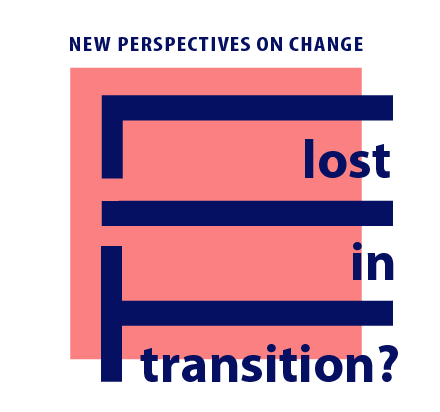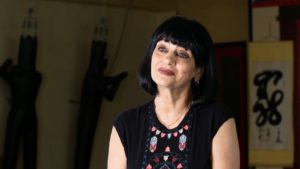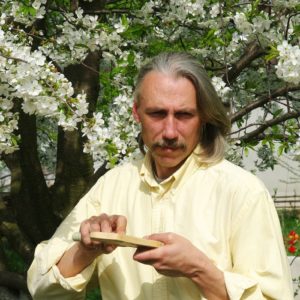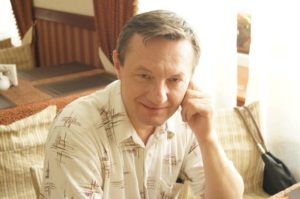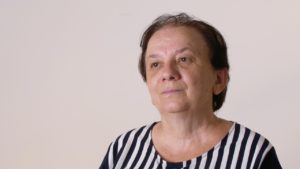
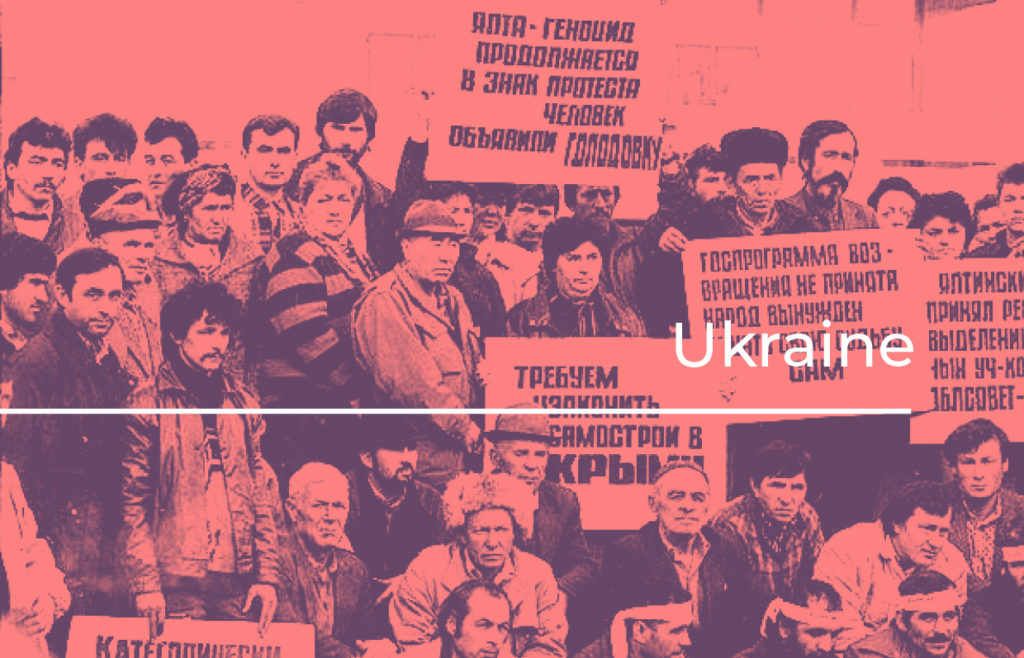
Ukraine in the 1990s: A Society in Transition
After the declaration of independence in 1991, Ukraine, like other countries of the former Soviet Union, faced many difficult challenges and tasks. One of the key challenges was the economic crisis and the restructuring of the labour market.
Economic Crisis and Restructuring: Challenges in Independent Ukraine
In terms of the economic development of independent Ukraine, it had quite attractive conditions – ranking 5th in GDP among post-Soviet republics, having high scientific, technical, and human resource potential, and a favourable geopolitical position. However, Ukraine lacked a substantial middle class, and the economic structure was dominated by the mining and metallurgical complex. This complex was both Ukraine’s hallmark and a burden, as many resources were spent on maintaining it. The complex mainly consisted of large, inefficient enterprises, hindered by the ineffective management of so-called “red directors” – former managers of large industrial enterprises, often party functionaries. This contributed to Ukraine losing potentially attractive foreign market niches to other countries. A notable feature of Ukraine was that only one-third of Ukrainian enterprises had a complete technological cycle and produced consumer-ready products, necessitating extensive restructuring of the economy. Over thirty years of independence, the service sector’s share (a global trend in economic development) nearly doubled, from 28.5% to 54.4%.
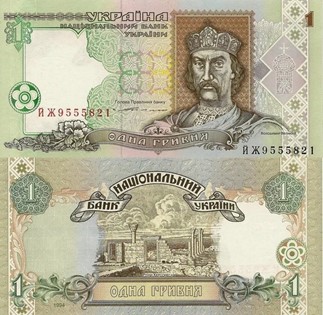
Figure 1: Ukrainian Hryvnia, 1995
Adaptation, Transformation and Social Activity among Vulnerable Groups
Different societal groups were affected by economic restructuring to varying degrees, but this period was a significant shock for everyone. Agricultural workers, in particular, experienced dramatic and significant changes. Ukraine, with its vast potential in agriculture, saw the collapse of collective or state enterprises that were prevalent in the USSR. This led to rural unemployment and many young people moving to cities in search of work, often lacking necessary skills. Middle-aged individuals mostly focused on subsistence farming, producing for themselves, and selling their products. Some villagers, using their organizational skills, transformed inefficient collective and state farms into new cooperatives and farms, supporting social infrastructure in some cases.
Pensioners played a crucial role during the transition period. Many families in the Soviet Union lived with multiple generations under one roof, largely due to housing issues. During the transition, when many able-bodied family members lost their jobs and income sources, pensioners often became the sole breadwinners. They utilized their craft skills and work experience to earn additional income during this difficult time, and the new conditions helped many of them regain social activity.
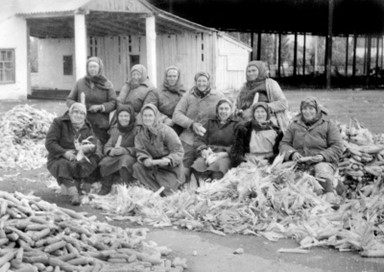
Figure 2: Pensioners helping with corn harvest, 1988.
The situation of people with disabilities, their self-realization, and socialization also became prominent public topics. In Soviet society, this issue was formalized and taboo. As Ukraine transitioned to independence, the principle of “The state pays for your survival – stay at home” gradually disappeared.
The LGBT advocacy movement in Ukraine is worth mentioning separately. During the Soviet Union, this group of citizens was not only vulnerable due to societal attitudes but also subject to criminal prosecution under the law. Independent Ukraine was the first post-Soviet country to abolish criminal prosecution of the LGBT community, and attitudes towards these citizens have been slowly changing, facilitated by state policy and the development of a healthier social space.
Military Personnel and Ideological Structure: Finding New Paths for Vulnerable Groups in Post-Soviet Ukraine
Ukraine entered the transition period with one of Europe’s largest armies. Military personnel found themselves in the position of being “forgotten” by society. The army underwent significant downsizing, and thousands of working-age men without civilian occupations became unemployed. The most active among them, with managerial and organizational skills and technical education, became some of the first entrepreneurs, organizers, engineers, and technicians of small industries. Some joined or started private security companies, while others left for other former Soviet countries, most often Russia, and continued to serve there, pledging allegiance to a new homeland.
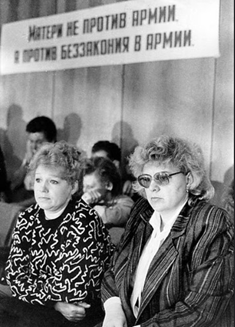
Figure 3: Participants of the First Congress of soldiers’ mothers in Ukraine. Zaporizhia, 1990. The poster reads: “Mothers not against the army, but against lawlessness in the army.”
Another large, diverse group of citizens was connected to the ideological and propaganda structure in the USSR. During the transition period, some revised their views, rethought their activities, and found fulfilment in various fields. Others adapted and engaged in similar activities, such as teaching history, philosophy, and social sciences in educational institutions, participating in party organizations and social movements. By utilizing their administrative resources and remaining “ownerless” party, public, industrial, and other resources, some of these individuals became wealthy or even oligarchs.
For almost five years, Ukraine operated under the Constitution of the USSR and other laws and regulations from the Soviet era, which significantly limited the country’s economic, political, and social development opportunities. New phenomena often emerged first, with legal regulations following later. For example, during the economic crisis, when people began losing their jobs, “shuttle traders” (small entrepreneurs who bought consumer goods abroad to sell in Ukraine) became widespread. This unorganized trade played a vital role in the development of the Ukrainian economy. In general, citizens during this period became more willing to change their workplace, field of activity, acquire new knowledge and qualifications, and assert their labour rights more actively in the labour market.
Government and Civil Society: Crisis of Relations and Participatory Democracy.
A significant characteristic of Ukraine’s transition was the crisis of relations between the government and civil society, marked by the absence of dialogue, lack of experience, and tools of participatory democracy. This form of democracy allows citizens to directly influence decision-making through petitions, inquiries, public hearings, etc., and took years to develop. People perceived the government as a guide rather than a hired manager from whom they could demand effective public administration. The decades-long enforced silence and suppression of dissent led to an explosion of social activity after the USSR’s collapse. Political parties of various orientations, public organizations, national and cultural associations, informal youth movements, and other manifestations of social activity emerged.
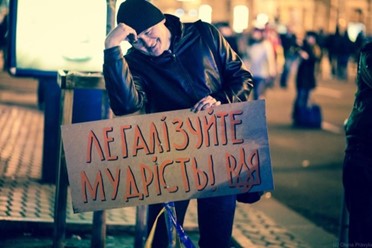
Figure 4: Kyiv, December 2013. Vadym Andriychuk in the first days of Maidan – the Revolution of Dignity. The banner reads: “Легалізуйте мудрість”, translating to “Legalise wisdom”.
The 1990s were thus a period of great challenges and crises for Ukrainian society, leaving many individuals from different social groups extremely vulnerable. Simultaneously, this period marked the formation of a new civil society, which played a crucial role in shaping modern Ukraine.
Timeline
-
Establishment of the People's Movement of Ukraine, which became a driving force in the struggle for independence 09-11.1989
-
The Living Chain of Unity - millions of people held hands and united dozens of localities across Ukraine. The action was dedicated to people's desire to live in a united Ukraine. According to unofficial data up to 5 million people took part 01.1990
-
Adoption of the Declaration of State Sovereignty 16.07.1990
-
Revolution on Granite, demanding secession of Ukraine from the USSR 02.10.1990
-
Declaration of Independence of Ukraine 24.08.1991
-
First presidential election in Ukraine 01.12.1991
-
Adoption of the Constitution of Ukraine 28.06.1996
-
Adoption of Ukraine's national currency - the Hryvnia 09.1996
-
Recognition of Holodomor as genocide 2006
-
Maidan - "The Orange Revolution" 2004
-
Celebration of Euro 2012 in Ukraine, Ukraine was visited by more than 8 million tourists 2012
-
Maidan - The Revolution of Dignity 2014
-
Annexation of Crimea 03.2014
-
Outbreak of war in Donbas 04.2014
-
Decommunisation laws enter into force 04.2015
-
Visa-free regime with the EU 2017
-
Establishment of the Orthodox Church of Ukraine and obtaining autocephaly 2018
Eyewitnesses
Tasks
Topic: Electoral law, participatory democracy, participation in democratic elections
Duration: 45 minutes
Materials: links to videos or visual technology (projector, screen), markers, sheets of paper
How to conduct the exercise:
- Give the children a link to an excerpt from an interview with Tetyana from Kherson about her first experience of democratic elections in Ukraine (2:15 – 5:30). Ask what caught their attention most from the experience which Tetyana recalls? Ask the children the following preparatory questions:
– Do they think that participation in elections should be a right or a duty in a democracy?
– What do they think is the turnout in Ukrainian elections (presidential, parliamentary, local)? What is the turnout of young people?
– Why are fair elections one of the key attributes of a democratic and rule of law state?
– Would they want to take part in elections and why (if yes/no)?
- Provide the children with information about attitudes towards obligations/rights to vote in different countries: “There are currently more than 20 countries in the world where participation in elections is not a right but an obligation of a citizen, for failure to comply with the obligation citizens will be fined or deprived of the opportunity to vote for up to 10 years. Such countries include Belgium, Australia, Singapore, Switzerland, etc. The turnout in these countries is up to 90 percent. In Ukraine, during the years of independence, the highest turnout for the presidential election was recorded in 1991 (84.16 percent), in 1994 the turnout was 70.4 percent, the lowest was in 2014 (59.48 percent), and in 2019, 62.8 percent of voters went to the polls. At the same time, youth turnout is consistently quite low – only 36%”.
- Invite the children to form two groups and give each group a task – group 1 should prepare arguments that participation in elections should be a citizen’s obligation and group 2 should prepare arguments that participation in elections should be a right and not an obligation (10 minutes to prepare arguments in groups). After the group discussion of the arguments is over, invite the children to share their findings in a common group (one argument from each group in turn) and then ask the children to vote for the approach they support more based on the discussion.
- Conduct a reflection with the children on this exercise. Questions for discussion:
– Why is it important to vote in elections?
– How can youth turnout in elections be increased?
– What should citizens do to make their choice informed?
Topic: Entrepreneurial development, career change
Duration: 45 minutes
Materials: photos, space in the room with the possibility to move around freely, words “pro” and “con” printed on a sheet of paper.
How to conduct the exercise:
- Show the students a picture of the monument erected near the central market in Sloviansk in the Donetsk region. Ask who and what they think the monument is dedicated to. Listen to a few thoughts and ask the students to explain their guesses.
- Tell the history of this monument: the monument depicts a so-called “shuttleman”, a representative of the first entrepreneurs of the post-Soviet era. The shuttle traders were people who had lost their jobs at factories, plants, research institutes or educational institutions and were forced to start shuttle trading to survive: they bought up goods which were in demand and not available in other countries, took them abroad and then bought things which were impossible or difficult to buy in our country. In the 1990s, shuttle traders became one of the engines of economic development.
- Tell the students that you are inviting them to talk more about entrepreneurship as the engine of the economy and to play a game. Place two pieces of paper on two opposite walls in the room in advance, one with the word “for” and the other with the word “against” written on it. Explain to the participants that at the beginning of the exercise they should all stand together in the middle of the room and you will call out different statements that they should agree or disagree with and take the appropriate position in the room. After the students have decided on their position, ask several participants to justify their opinions.
Statement for the exercise (you can add your own):
– Work is an obligation, not a right
– It is not the state’s job to make sure people don’t go hungry – people should think about it themselves
– You cannot become an entrepreneur, you can only be born one
– One cannot earn a lot of money honestly
– Everyone should have the same income, and different income levels create conflicts in society.
– The state should guarantee a minimum income to everyone, regardless of their employment
– Taxes must be paid from a certain level of income
– A person should work in the field in which he/she has been trained - Debrief the students after the exercise. Questions for discussion:
– Were there any statements on which you found it difficult to take a stand? Which ones and why?
– Were there any questions where you were surprised by other students’ reactions?
– Have you already made up your mind about your future profession? What are the key criteria for your decision? Who influences your decision?
